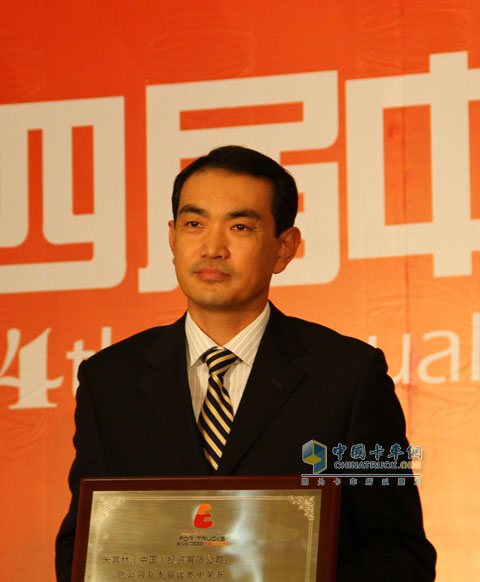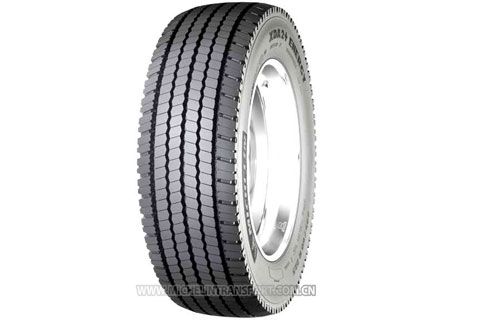On November 7, 2011, Michelin won the Outstanding Contribution Award for the 4th China International Truck Conserving Fuel Contest . As the first tire company to introduce fuel-efficient tires for trucks and buses into the Chinese market, Michelin was honored with this honor.
In 2006, Michelin introduced the first fuel-efficient tire, Michelin XZA 2+ Energy, for the Chinese card passenger car tire market. Michelle (China) Investment Co., Ltd. Customer Experience Manager of the Passenger Car Tyre Division Zhang Hongbing told reporters that fuel-efficient tires have been developed to meet the needs of the market and users. The most obvious and direct benefit is that it helps users to save fuel consumption and thus reduce fleets. The use of cost.

Michelin (China) Investment Co., Ltd. Customer Experience Manager, Passenger Car Tyre Division Zhang Hongbing

Michelin (China) Investment Co., Ltd. Customer Experience Manager, Passenger Car Tyre Division Zhang Hongbing
Rolling resistance makes tires the key to fuel efficiency
At that time, tire companies introduced the concept of fuel economy. End users did not understand how tires could save fuel. To this, Zhang Hongbing mentioned that the rolling resistance of vehicles is an important factor in tire fuel economy.
The so-called rolling resistance? Each time the wheel rotates, when the tire comes in contact with the road surface, the tire will deform due to the weight bearing. As the tire structure is deformed, its constituent parts will become hot, so that part of the energy transmitted by the engine will be lost: this is the phenomenon of rolling resistance. Since the energy required for the operation of the vehicle is provided by the combustion of fuel, reducing the rolling resistance of the tire will save fuel consumption, thereby reducing the emission of carbon dioxide and other greenhouse gases.
After data tests, the existence of rolling resistance makes the fuel consumption of the tires account for about 20% of the fuel consumption of each car in the entire car, and accounts for 1/3 of the passenger cars and cars. In the cost structure of the transportation industry, tires account for about 6% of overall costs, while fuel costs account for as much as 40% of overall costs. They rank first in the overall cost of the fleet. With rising fuel prices, this A proportion is still further improved. According to statistics, once a truck or bus gets three oils on the highway, it is added to the tires once. As the energy supply market becomes more volatile, the transport industry will assume more pressure and influence.
In response to this, Michelin Fuel Tire's application of innovative rubber formulas has enabled tires to reduce rolling resistance without reducing tire grip (especially on slippery surfaces) and wear resistance to achieve fuel-efficient properties.
Economic advantages Obvious Michelin oil tires
With the launch of Michelin's first fuel-efficient tires, its fuel-efficient effects are increasingly recognized by the authorities and users. In June 2007, the XZA 2+Energy fuel-efficient tires and Michelin tires produced by Michelin were tested by the Ministry of Transport's Highway Traffic Test Facility. Test results show that XZA 2+Energy tires are at least 2% more fuel-efficient than ordinary tires when they are equipped with six tires.
Nowadays, with rising oil prices, users are particularly interested in fuel-efficient products, and Michelin Fuel Tire is meeting this demand. Zhang Hongbing told reporters: “If a fleet owns 60 vehicles, assuming that each truck travels 240,000 kilometers per year, if the entire fleet uses Michelin fuel-efficient tires, the fleet can save 18,900 yuan per vehicle per year (assuming a fuel consumption of 35 liters/100 km. The oil price is 7.5 yuan/litre, which also means that it can save the total cost of the fleet more than 1.1 million yuan per year. Under certain specific road conditions and driving conditions, the service life of Michelin oil tires is generally more than one year, and can also be used by users. More savings in fuel consumption.†With this account, the economic advantages of fuel-saving tires are obvious.
Not only that, but Michelin tires provide fuel-saving tires and provide end-users with a complete fuel saving solution. Previously, only trucks equipped with tubeless tire rims could use fuel-efficient tires, and the cost of changing rims was prohibitive for many teams and individual users. For this reason, Michelin introduced XZA 2 Energy in January 2010. This product is the only domestic fuel-efficient tire with inner tubes. Zhang Hongbing mentioned that in China, more than 90% of trucks are using tires with inner tubes, and fuel-efficient solutions with inner tube tires are undoubtedly an urgent need to reduce the operating costs of trucks and buses.

Michelin XDA 2+ Energy tires

Michelin XDA 2+ Energy tires
In addition, Michelin Michelin has continuously introduced new products based on the actual needs of Chinese customers. A variety of fuel-efficient products are introduced for different road conditions and installation positions. At the Shanghai International Auto Show in April 2011, Michelin introduced for the first time two fuel-efficient tires dedicated to drive axles - Michelin XDA 2 Energy and XDA 2+ Energy, as well as U roads (for urban and suburban areas, frequent start-ups and parking Michelin XZU Energy.
As the pioneer and leader in the fuel-efficient tire market for trucks and buses, Michelin has continuously enriched its fuel-efficient tire product line in the past five years. Currently, it can provide 8 specifications and 6 patterns for passenger cars and fuel-efficient fuel and tubeless tyres. The products meet the demand for fuel-efficient tires in different industries, including mid- to long-distance high-speed passenger transport, freight transportation, and urban public transportation. Zhang Hongbing said: “Michelin not only brings considerable economic benefits to users, but also creates a huge environmental benefit for society. Michelin has saved more than 100 million liters of fuel and carbon for the majority of Michelin team users since the sale of the first fuel-efficient tires. The reduction of nearly 240,000 tons is equivalent to the planting of 7.28 million adult trees."
PVC Resin is easy to process, and can be processed by molding, lamination, injection molding, extrusion, calendering, blow molding and other hollow methods. Polyvinyl chloride is mainly used to produce artificial leather, film, wire sheath and other plastic soft products, but also can produce plates, doors and windows, pipes and valves and other plastic hard products.
Pvc Resin,Pvc Resin Powder,Pvc Resin Sg5,Pvc Resin K67
Henan Shunbang Chemical Industry CO.,Ltd , https://www.pvcresinchemical.com